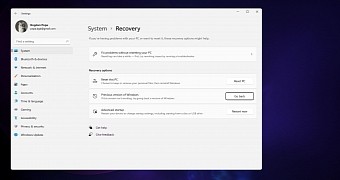Windows 11 is coming later this year, and as announced already, it will be offered as a free upgrade for certain eligible Windows 10 devices.
In other words, once the new OS goes live, these computers will get a notification in Windows Update that Windows 11 is available for their devices, and once they agree to install it, the whole thing will take place automatically, with a reboot required to complete the installation.
The process is as straightforward as it gets, but what if some of those who make the switch to Windows 11 don’t like the new OS and want to go back to Windows 10?
Easy downgrades
Microsoft will use the same downgrade policy as in the case of Windows 10 feature updates. In other words, if you want to go back from Windows 11 to Windows 10, you can easily do this using a built-in OS feature that is only available for 10 days after installing Windows 11.
Starting with the 11th day, all downgrades would require a clean install, as the necessary files to go back to Windows 10 would be removed.
“After you have installed the Windows 11 upgrade, there is a 10-day period where you can move back to Windows 10 while keeping files and data that you brought along with you. After the 10 days, you will need to back up your data and do a “clean install” to move back to Windows 10,” Microsoft explains.
In theory, 10 days are more than enough to figure out if you like the new OS or if you’re hitting any big issues that would prevent you from using it properly.
Windows 11 will launch in the fall of the year, and the free upgrades will continue in early 2022.

 14 DAY TRIAL //
14 DAY TRIAL //